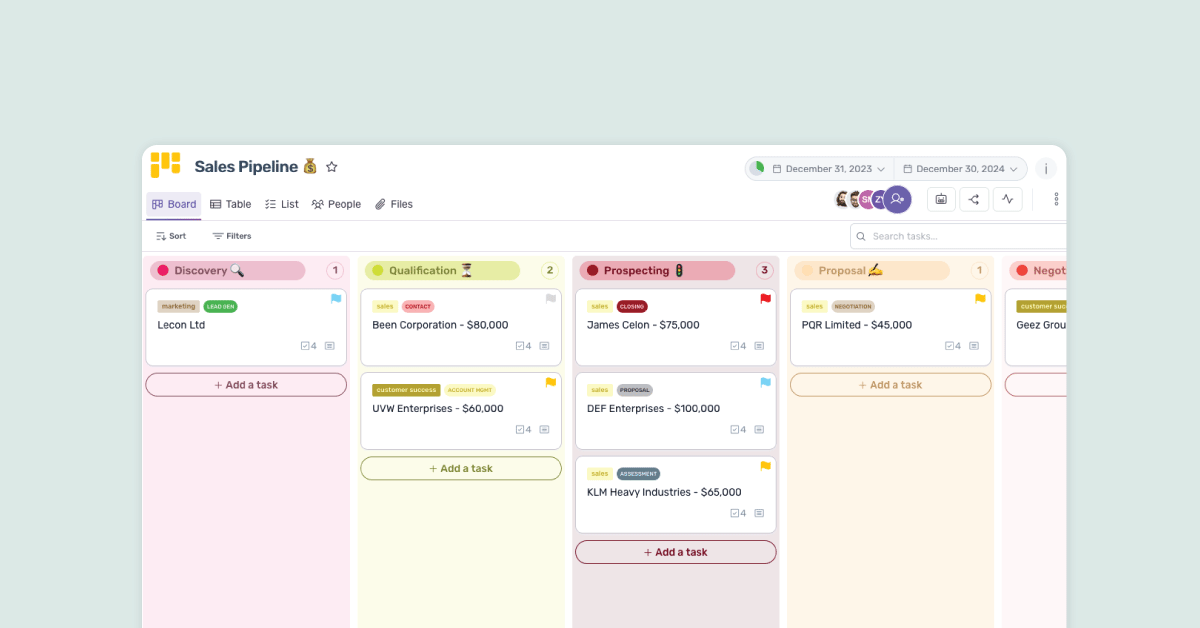It has become crucial for businesses to embrace DevOps practices in order to stay ahead of the competition. DevOps, short for Development and Operations, is a set of principles and practices that aim to bridge the gap between software development, testing, and deployment. By fostering collaboration and automation, DevOps enables organizations to deliver software faster, while maintaining high quality and reliability.
Understanding DevOps Practices
Before we delve into the top tools for orchestrating DevOps practices, it’s important to understand the importance and key principles of DevOps in modern software development.
DevOps, short for Development and Operations, is a set of practices that aims to bridge the gap between software development and IT operations. It focuses on creating a culture of collaboration, automation, and continuous improvement to enable organizations to deliver software updates and features at an unprecedented pace.
The Importance of DevOps in Modern Software Development
In today’s highly competitive market, businesses are constantly under pressure to deliver software updates and features at an unprecedented pace. This has led to the rise of DevOps as a solution to streamline the software development lifecycle and improve collaboration between development and operations teams.
By breaking down silos and fostering a culture of collaboration and communication, DevOps helps organizations achieve faster time to market, higher customer satisfaction, and increased innovation.
DevOps practices enable organizations to:
- Automate manual processes to reduce errors and increase efficiency
- Improve collaboration and communication between development and operations teams
- Enable faster and more frequent software releases
- Ensure higher quality software through automated testing and continuous integration
- Enable faster detection and resolution of issues through continuous monitoring and feedback loops
Key Principles of DevOps Practices
DevOps is built on a number of key principles that guide its implementation and success. These principles include:
- Continuous Integration: This principle emphasizes the need for developers to frequently integrate their code changes into a shared repository. By doing so, conflicts and issues can be identified and resolved early, ensuring a more stable and reliable codebase.
- Continuous Delivery: Continuous delivery focuses on automating the software release process, allowing organizations to quickly and reliably deploy software updates to production environments. This principle enables faster time to market and reduces the risk associated with manual deployments.
- Infrastructure as Code: Infrastructure as code is the practice of managing and provisioning infrastructure resources through machine-readable definition files. This principle enables organizations to treat infrastructure as software, allowing for version control, automated provisioning, and consistent environments across development, testing, and production.
- Automated Testing: Automated testing is a critical aspect of DevOps practices. By automating the testing process, organizations can ensure that software updates are thoroughly tested and validated before being deployed to production. This principle helps reduce the risk of introducing bugs and regressions into the system.
By following these principles, organizations can achieve a more streamlined and efficient software development lifecycle, resulting in faster delivery of high-quality software updates.
Introduction to DevOps Tools
DevOps tools play a crucial role in orchestrating the various practices and principles of DevOps. These tools automate and streamline tasks such as code management, testing, deployment, monitoring, and logging. By utilizing these tools, organizations can achieve faster software delivery, improved collaboration, and enhanced efficiency in their software development lifecycle.
One of the key benefits of using DevOps tools is their ability to automate manual tasks. For example, version control systems like Git enable developers to track changes made to their code, collaborate with team members, and easily revert back to previous versions if needed. This not only saves time but also reduces the risk of errors and conflicts when multiple developers are working on the same codebase.
Another important aspect of DevOps tools is their ability to enable collaboration among different teams involved in the software development process. Continuous integration/delivery servers like Jenkins allow developers to automatically build, test, and deploy their code changes. This ensures that any issues or bugs are identified early on, preventing them from reaching production environments. Additionally, these tools provide visibility into the entire software development lifecycle, allowing teams to track the progress of their work and make informed decisions.
The Role of DevOps Tools in Orchestrating Practices
DevOps tools act as a catalyst for implementing and managing DevOps practices within an organization. These tools not only automate tasks but also promote a culture of collaboration and continuous improvement. By utilizing these tools, organizations can break down silos between development, operations, and other teams, fostering a more efficient and streamlined software delivery process.
Configuration management tools like Ansible and Puppet are essential in ensuring consistency and reproducibility across different environments. These tools allow organizations to define and manage their infrastructure as code, making it easier to provision and configure servers, containers, and other resources. This eliminates manual configuration errors and ensures that all environments are identical, reducing the risk of deployment issues.
Monitoring and logging tools are also crucial in the DevOps toolchain. Tools like Nagios, Prometheus, and ELK Stack provide real-time insights into the performance and health of applications and infrastructure. They enable organizations to proactively identify and resolve issues, ensuring high availability and reliability of their systems. Additionally, these tools help in analyzing logs and metrics, providing valuable information for troubleshooting and performance optimization.
Criteria for Choosing the Right DevOps Tools
When selecting DevOps tools, it’s important to consider your organization’s specific needs and requirements. There is no one-size-fits-all solution, and different tools may be more suitable for different organizations or projects. Here are some key factors to consider when choosing the right DevOps tools:
Integration capabilities: Ensure that the tools you choose can seamlessly integrate with your existing systems and workflows. This will help in avoiding any disruptions or compatibility issues.
Ease of use: Look for tools that have a user-friendly interface and provide clear documentation and support. This will enable your team to quickly adopt and utilize the tools effectively.
Scalability: Consider the scalability of the tools, especially if you anticipate rapid growth or increased demand in the future. The tools should be able to handle larger workloads without compromising performance.
Community support: Check if the tools have an active and supportive community. This ensures that you can easily find resources, tutorials, and assistance when needed. It also indicates that the tools are regularly updated and maintained.
Cost: Evaluate the cost of the tools and whether they fit within your organization’s budget. Some tools may have free or open-source versions, while others may require a subscription or licensing fee.
By considering these criteria, you can choose the right DevOps tools that align with your organization’s goals and help you achieve a successful DevOps implementation.
Comprehensive Review of DevOps Tools
Welcome to our comprehensive review of the top DevOps tools that can help orchestrate your DevOps practices. In this article, we will explore a wide range of tools that are categorized into configuration management tools, continuous integration/continuous deployment tools, and monitoring and logging tools. By the end of this review, you will have a better understanding of the various tools available and how they can enhance your DevOps workflow.
Configuration Management Tools
Let’s start by discussing configuration management tools. These tools, such as Puppet, Chef, and Ansible, provide a way to automate the setup and configuration of infrastructure and application environments. They allow organizations to define and manage infrastructure as code, enabling a more consistent and reproducible deployment process.
Puppet, one of the most popular configuration management tools, uses a declarative language to define the desired state of your infrastructure. It allows you to manage your infrastructure at scale, ensuring that all your servers are configured correctly and consistently.
Chef, on the other hand, follows a similar approach but uses a Ruby-based DSL (Domain-Specific Language) to define the desired state of your infrastructure. It provides a flexible and powerful way to manage your infrastructure and has a large community of users and contributors.
Ansible, a relatively newer player in the configuration management space, takes a different approach by using a simple and human-readable YAML-based language. It focuses on simplicity and ease of use, making it a popular choice for many organizations.
Continuous Integration/Continuous Deployment Tools
Now, let’s move on to continuous integration/continuous deployment (CI/CD) tools. These tools, such as Jenkins, CircleCI, and GitLab, help automate the build, test, and deployment process. They play a crucial role in facilitating continuous integration by automatically merging code changes and running tests, ensuring that the codebase remains stable and issues are caught early.
Jenkins, a widely adopted CI/CD tool, offers a vast array of plugins and integrations, making it highly customizable and extensible. It allows you to automate the entire software delivery process, from building and testing to deploying and monitoring.
CircleCI, a cloud-based CI/CD platform, provides a seamless and scalable solution for automating your software development workflow. It offers a simple and intuitive interface, making it easy to set up and manage your CI/CD pipelines.
GitLab, an all-in-one DevOps platform, not only provides CI/CD capabilities but also offers version control, issue tracking, and other collaboration features. It allows you to manage your entire software development lifecycle in a single platform, simplifying your DevOps workflow.
Monitoring and Logging Tools
Lastly, let’s explore monitoring and logging tools. These tools, such as ELK Stack, Splunk, and New Relic, help organizations gain insights into their software’s performance and troubleshoot issues in real-time. They collect and analyze log files, monitor system metrics, and provide valuable insights into the health and performance of applications and infrastructure.
The ELK Stack, which stands for Elasticsearch, Logstash, and Kibana, is a popular open-source solution for log management and analytics. It allows you to collect, parse, and analyze log data in real-time, providing powerful search and visualization capabilities.
Splunk, a leading log management and analysis platform, offers a wide range of features for monitoring and troubleshooting. It provides real-time visibility into your logs and metrics, allowing you to quickly identify and resolve issues.
New Relic, a comprehensive application performance monitoring (APM) tool, helps you monitor the performance of your applications and infrastructure. It provides detailed insights into the performance bottlenecks and helps you optimize your software for better user experience.
By leveraging these monitoring and logging tools, organizations can proactively identify and resolve issues, ensuring that their software is running smoothly and meeting the desired performance standards.
In conclusion, the DevOps landscape offers a plethora of tools that can greatly enhance your software development and deployment processes. From configuration management tools to CI/CD platforms and monitoring and logging solutions, each tool plays a crucial role in streamlining your DevOps workflow. By carefully selecting and integrating these tools into your environment, you can achieve faster delivery cycles, improved collaboration, and higher-quality software.
The Future of DevOps Tools
As technology continues to evolve at a rapid pace, so do the tools and practices in the DevOps landscape. Let’s explore some emerging trends in DevOps tooling and discuss how organizations can stay updated with the latest advancements in this field.
With the increasing demand for faster software delivery and continuous integration and deployment, DevOps has become an integral part of modern software development. As a result, the tools used in the DevOps process are constantly evolving to meet the changing needs of organizations.
Emerging Trends in DevOps Tooling
One emerging trend in DevOps tooling is the rise of containerization technologies such as Docker and Kubernetes. These tools enable organizations to package and deploy applications in portable, lightweight containers, making it easier to manage and scale their infrastructure.
Containerization has revolutionized the way applications are developed, deployed, and managed. By encapsulating an application and its dependencies into a container, organizations can ensure consistency across different environments, from development to production. This allows for seamless deployment and scalability, as containers can be easily replicated and distributed across multiple servers.
Another emerging trend in DevOps tooling is the adoption of serverless computing. Serverless architectures, such as AWS Lambda and Azure Functions, allow developers to focus on writing code without worrying about infrastructure management. With serverless, organizations can build and deploy applications faster, as they don’t have to provision or manage servers.
Serverless computing also offers cost savings, as organizations only pay for the actual usage of the application, rather than for idle server time. This makes it an attractive option for organizations looking to optimize their infrastructure costs.
How to Stay Updated with DevOps Tools
Staying updated with the latest DevOps tools and practices can be challenging, given the rapid pace of innovation in this field. However, there are several strategies you can adopt to stay informed.
Attending industry conferences is a great way to stay updated with the latest trends in DevOps tooling. These conferences bring together industry experts and thought leaders who share their insights and experiences. It’s an opportunity to learn from the best and network with like-minded professionals.
Participating in online communities, such as forums and discussion boards, is another effective way to stay updated. These communities provide a platform for DevOps practitioners to share their knowledge, ask questions, and discuss emerging trends. By actively engaging in these communities, you can stay informed about the latest tools and practices.
Following relevant blogs and podcasts is also a valuable strategy. Many industry experts and organizations regularly publish articles and podcasts that cover the latest trends and advancements in DevOps tooling. By subscribing to these sources, you can receive regular updates and insights directly in your inbox or podcast app.
Finally, experimenting with new tools in a sandbox environment is an excellent way to stay updated and gain hands-on experience. Setting up a sandbox environment allows you to explore and evaluate new tools without impacting your production systems. By experimenting with different tools, you can assess their suitability for your organization and stay ahead of the curve.
Conclusion: Orchestrating Successful DevOps Practices
In conclusion, implementing the right set of DevOps tools is crucial for orchestrating successful DevOps practices. By embracing automation, collaboration, and continuous improvement, organizations can achieve faster delivery cycles, higher quality software, and improved customer satisfaction. Remember to carefully evaluate your organization’s needs and criteria when selecting DevOps tools, and stay updated with the latest trends and advancements to stay ahead of the competition. With the right tools and practices in place, you can unleash the full potential of DevOps and drive innovation in your software development processes.
Key Takeaways for Implementing DevOps Tools
- DevOps tools play a crucial role in automating and streamlining DevOps practices.
- Consider integration capabilities, ease of use, scalability, and community support when selecting DevOps tools for your organization.
- Configuration management, CI/CD, and monitoring/logging tools are key categories of DevOps tools to consider.
- Stay updated with emerging trends and advancements in DevOps tooling to drive continuous improvement.
Final Thoughts on the Future of DevOps Practices
As organizations become more digitally focused and the demand for faster software delivery increases, DevOps practices will continue to play a crucial role in the software development lifecycle. By embracing the right set of DevOps tools and staying ahead of emerging trends, organizations can ensure they are well-positioned to thrive in the future of software development.
As you explore the vast landscape of DevOps tools and practices, remember that the key to successful implementation lies in seamless collaboration and integration. Teamhub is at the forefront of this, providing a centralized hub that connects Project teams, People Ops, Marketing, and IT teams. With our intuitive platform, you can streamline your Projects, Documentation, and HR processes, fostering a collaborative environment that enhances productivity. Ready to transform the way your team works? Start your free trial today and join the thousands of companies optimizing their workflows with Teamhub.










